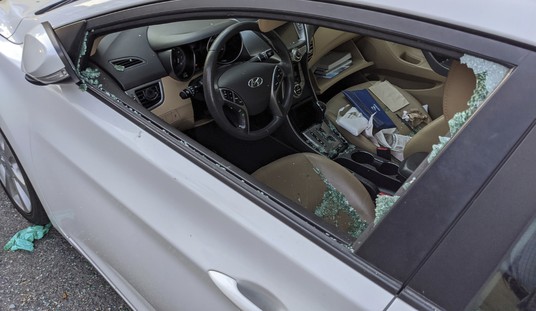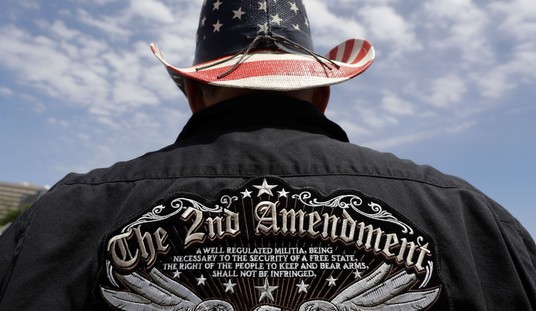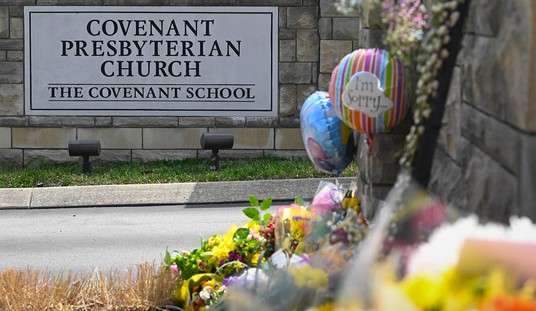Tuesday August 4 marked the 100th anniversary of the war whose serial catastrophes did more to shape the 20th century than all other events, and irreversibly far for the worse. And in the Mideast today, a century later—most notably for Western powers, in Gaza—the face of 21stt century war is emerging. It bodes ill for the West.
There is, fortunately, a strategy that could deal with it, if Western sensibilities can tolerate it. Alas, unless injury far worse than the horrific atrocities of Sept. 11, 2001, is inflicted upon the West, it seems clear the West is not yet prepared to tolerate it, and thus very likely will fail to act decisively until it is pushed by catastrophe.
Three intersecting factors give rise to radically greater threats of severe harm, and signal the need for the West to reconsider how it fights terrorists who hide behind human shields: tougher terrorists; our values being turned against us by the world’s worst terrorists; and the shadow of World War I, mankind’s worst war.
Tougher Terrorists. Terrorists fight smarter. Retired Gen. Robert Scales, former commandant of the Army War College, and co-author Douglas Oliphant see ominous signs of significant improvement in the combat effectiveness of Islamist terror groups:
“In the immediate aftermath of the attacks of Sept. 11, 2001, the West confronted terrorists who acted like, well, terrorists. In Iraq and Afghanistan, al-Qaeda and other militant groups relied on ambushes, roadside bombings, sniper fire and the occasional “fire and run” mortar or rocket attack to inflict casualties on U.S. forces.”
“When terrorists were stupid enough to come out of the shadows, they fought as a mob of individuals. One rip of a Kalashnikov or a single launch of a rocket-propelled grenade was enough. If they stood to reload, they risked annihilation at the hands of their disciplined, well-trained and heavily armed American opponents.”
“Today, it’s different. We see Islamist fighters becoming skilled soldiers. The thrust of the Islamic State down the Euphrates River illustrates a style of warfare that melds old and new. U.S. soldiers fighting in Iraq used to say: “Thank God they can’t shoot.” Well, now they can. They maneuver in reasonably disciplined formations, often aboard pickup trucks and captured Iraqi Humvees. They employ mortars and rockets in deadly barrages. To be sure, parts of the old terrorist playbook remain: They butcher and execute prisoners to make unambiguously clear the terrible consequences of resistance. They continue to display an eager willingness for death and the media savvy of the “propaganda of the deed.”
The authors explain that these trends are powered by foreign fighters coming into the Mideast and Asian regions, and by the rise of pervasive Internet communications. The carnage in the three-year civil war in Syria has served as a battlefield proving ground. A key reported reason Israel accepted recent ceasefire proposals is that the IDF told the Cabinet totally dismantling Hamas in Gaza would take five years. (Another is that the Obama administration subjected hitherto routine arms resupply to Israel to a separate White House review, a move clearly intended to coerce Israel into accepting Hamas as a negotiating partner and making up-front concessions.)
The radical Islamist group ISIS, already ravaging Syria and Iraq, aims to destabilize Saudi Arabia, reported Bill Gertz of the Washington Free Beacon. ISIS uses social media to rally activists, target Saudi intel assets and incite bombing inside the Kingdom.
Values Perversity. Our civilized values have been turned against us, by Islamo-fascists, repeatedly, since the 9/11 attacks. In the latest instance, complaints over proportionality in the Third Gaza War involve far less destruction than was visited upon Kosovo in 1999. Former Israeli UN Ambassador Dore Gold notes that NATO’s three-month air campaign destroyed 40,000 homes. Yet then there were minimal protests on behalf of the genocidal Serbs. Not so with the Palestinians. Worse, setting aside the small children, many Gaza civilians support terror and oppose recognititon of a Jewish state.
A Hamas urban warfare manual contains this about the impact of urban environments on Israeli operations:
“The soldiers and commanders (of the IDF) must limit their use of weapons and tactics that lead to the harm and unnecessary loss of people and [destruction of] civilian facilities. It is difficult for them to get the most use out of their firearms, especially of supporting fire [e.g. artillery].”
Soldier-blogger Michael Totten analyzes the death figures and sees a distribution consistent with Israel targeting fighters, not civilians. Taking figures–compiled by the Palestinian Center for Human Rights–through July 26:
(a) 44 percent of fatalities were males between 17 & 30, though this segment comprises only 10 percent of the population;
(b) 57 percent of fatalities were males between 17 & 39, versus 17 percent of Gazans in this age bracket;
(c) 20 percent of fatalities were children under age 17, far less than the over 50 percent share of Gazans that are under 17;
(d) adult female fatalities were under 10 percent, versus their 25 percent share of Gazans.
Thus: males of prime fighting age killed totaled more than their population share; women & children killed totaled less than theirs. This distribution is consistent with Israel targeting fighters, not women & children.
Jonathan Tobin’s “Putting Compassion for Palestinians in Perspective” raises the point that even upon determining who are genuine civilians in a war against those who don’t wear uniforms, many Palestinians are willing accomplices to Hamas:
“Palestinians who voted for Hamas, support their charter that calls for Israel’s eradication and the genocide of its Jewish population, cheer the deaths of Jewish civilians, and provide all possible aid to terrorists are not exactly innocent bystanders in this war.”
Hamas–surprise, surprise–continued its pattern of blatantly violating truces, now secure in the knowledge that the West will condemn Israel for defending. Large numbers of people in the West–leaders, reporters, voters–are condemning Israel, even knowing that in doing so they are doing exactly what Hamas wants them to do. The vast majority does this unintentionally, but nonetheless they do it.
Israel has discovered that even when fighting a terrorist group out to obliterate the Jewish state and kill every Jew on the planet, even when that terror group uses children as human shields, Israel will lose the propaganda war. Put simply, pictures of dead children trump all, including the principle of fixing blame for their deaths on those using kids as shields.
The Shadow Cast By Mankind’s Worst War. Though three times as many people—50 million versus 16 million—perished in World War II, it was the Great War that spawned the second.
The 1914-1918 conflagration, and the political settlements of 1919 – 1924 that followed, did more than anything else to shape modern geopolitics. Three empires collapsed, as twin totalitarian tyrannies—Nazism and Communism—emerged. Between them they accounted for over a hundred million deaths in the remainder of the century.
Colonial empires in what came to be called the Third World were replaced by assorted tyrannies, that were characterized by, with all too rare exceptions, political repression, economic immiseration and social fragmentation.
In the early part of the 21st century, similar forces gather. Their impact is immensely amplified by the global media conversation, which transmits lies faster than truth (as did older forms of media, but at slower average speed and with far smaller global coverage). These networks enable distant geographic communities to interconnect as “virtual” communities. Able to cheaply exchange advice, encouragement and technical instruction, they enable hitherto atomized groups to interact and reinforce atavistic crusades fueled by myriad raw resentments—political, economic, social and/or religious.
So how do we deal with them?
A New Strategy: If We Can Bear It. To counter the new terror threat, we must do several things. We must fight terrorists on our terms, not theirs; we must resist grisly images designed to get us to excessively constrain those trying to defend us; and we must destroy the enemy before millions die, when, someday, terrorists gain access to nuclear weapons.
One way to do this: tell Gazans they must rise up, as did the people of Syria, to fight their oppressors, else they will be treated as allies of Hamas—channeling George W. Bush’s immediate post-9/11 statement: “You are either with us, or against us.” There must be no middle ground. If Gazans decline to revolt, we could destroy their assets from the air, using munitions that can destroy deep tunnels. Casualties at World War II air raid levels could well result.
Sound harsh? It is—very harsh. But remember that we won that war. We did so with unconditional surrender. No ceasefires, no middling outcomes. Victory at all cost. American society was resilient and unified enough then to persevere. We are considerably less so today.
It will be argued that doing such things makes us like our enemy. We rejected that argument 70 years ago. But then we possessed a societal cohesion and hence cultural confidence we lack today.
If nearly 3,000 dead are not enough to rally the larger populace more than partially, it could easily take many times 3,000 dead to stand a chance of fully waking us up. Is the number ten, a hundred or a thousand times the hideous price we paid on 9/11?
Writing in the Aug. 3 New York Times, on eve of the Great War’s Aug. 4 centenary commemorating the start of combat, Alan Cowell noted:
“Back then, as hostilities loomed, Sir Edward Grey, the British foreign secretary, famously remarked: ‘The lamps are going out all over Europe; we shall not see them lit again in our lifetime.’….”
“As the conflict drew to a close, a more cynical view overtook that sentiment when David Lloyd George, the British prime minister at the time, is said to have remarked: ‘This war, like the next war, is a war to end war.’”
Unless we adopt a strategy that favors our side, the next terror war could well end in defeat for the West. If somehow we prevail without changing strategy, likely we will pay a fearful price for indulging our civilized sensibilities in conducting wars against atavist barbarians.








Join the conversation as a VIP Member